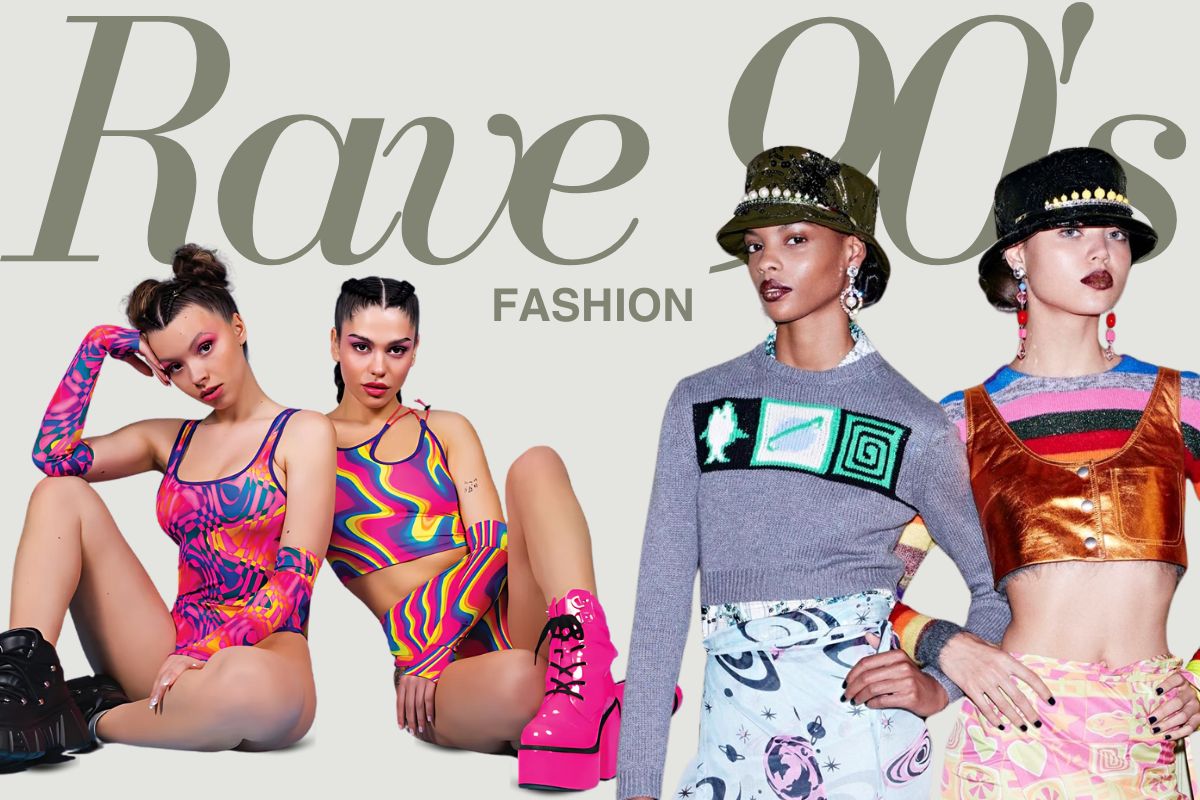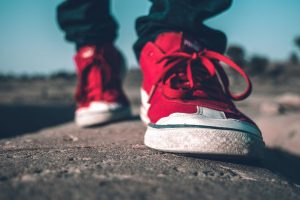The rave scene in the underground music and partying social spaces in the 1990s was one to remember. With the evolution of acid house and the techno beats keeping the crowd dancing constantly to the new sunrise, it was clear that the rave culture spanned beyond the music. One thing central to this culture is Rave 90s fashion, which is daring, colourful, vibrant, and simply unforgettable. The influence of this fashion can still be felt today, especially in streetwear, music festivals, and even runway shows.
Origins of Rave 90’s Fashion
Rave 90s fashion took the world by storm along with the damp underground rave booming in the UK. With clubs and warehouses being filled with people, the addition of bass-heavy music made dancing a whole new experience. Partygoers wanted clothing that was comfortable, expressive, and met the best of standards. Most importantly, the attire needed to be striking under strobe and UV lights Rave fashion diverged from the polished and preppy styles associated with 90s mainstream culture.
It embraced freedom, do-it-yourself creativity, and sensory overload. The clothing uniform of ravers everywhere became neon colours, oversized silhouettes, and an eclectic mix of patterns. Rave culture was a form of self-expression not through protest signs but through bucket hats, glow sticks, and chunky trainers.
Key Elements
Neon Everything: The first rule of Rave 90s Fashion is, if it’s not neon, it doesn’t exist. Clothes, nail polish, hair dye, and even makeup all embraced bright colours. It was all about neon pink, green, orange, and yellow. With the addition of blacklight, these striking colours made ravers stand out in dark, hypnotic venues.
Baggy and Comfortable Clothing: Having to endure continuous dancing for hours meant tight, uncomfortable clothes were absolutely forbidden. Instead, oversized T-shirts, wide-legged trousers, cargo pants, and tracksuits became the norm. Movement was key, but most importantly, comfort was king.
Kandi Bracelets and Beads: The Kandi bracelets are a symbol of Peace, Love, Unity, Respect or PLUR, which embodies the spirit of rave culture.
Platform Shoes and Trainers: Boots, especially platform sneakers, added flair while also being easy to dance in. Trainers from several brands like Nike and Adidas were also big during this time because they provided comfort during long nights of dancing.
Psychedelic and Cartoon Prints: Psychedelic swirls and merry faces plastered on T-shirts and hoodies and cringe smiley faces (unofficial symbols of acid house culture). Rave 90s was bold; it was nothing but a combination of cartoons and music culture, lacking an ounce of subtlety.
Face Paint and Glitter: Clothing was just one part of dressing up as a raver. Artists went a step further with body art like glow-in-the-dark face paint glitter and even UV-reactive makeup, transforming ravers into performers.
How Rave 90’s Fashion Continues to Inspire Today
The essence of Rave 90s Fashion can be witnessed at bigger music festivals today, including the Electric Daisy Carnival, Tomorrowland, and Burning Man. Several brands have also attempted to revive the 90s rave style, such as Dolls Kill, iHeartRaves, and even high-end fashion names like Balenciaga.
Over the years, neon colours, oversized clothes, and eclectic accessories have become trademarks of festival fashion. Stars like Dua Lipa, Billie Eilish, and Lil Nas X embraced this look, ensuring the daring attitude of the 90s raver lives on in contemporary popular culture. The recent “cyber rave” trend on TikTok is inspired by alien imagery, wide-leg pants and UV makeup, which are evolutionary products of Rave 90s Fashion.
Rave 90’s Fashion Around the World
The UK was clearly one of the first countries to take an interest in rave culture. Other countries also adopted the culture and fashion very quickly. Here is what they had to offer:
- USA: The look from the US, especially in Los Angeles, Miami and New York, was highly accentuated with neon-coloured synthetic hair extensions (known as falls) and high-platform shoes.
- Germany: Home of Love Parade, Berlin’s industrial scene infused black, industrial styles along with bright colours.
- Japan: Influenced by mangas, Harajuku, Tokyo, dealt with adding high energy to already existent rave fashion.
Every region adopted a part of Rave 90s Fashion, which stands as a unique attitude and idea belonging to each region, resulting in an incredibly diverse and colourful tapestry created by the entire world.
Final Words: Why Rave 90’s Fashion Will Never Die
Rave 90s Fashion is more than just the aesthetics. The core of it was embracing life, the connection to the world, and the freedom. Rave 90s fashion goes beyond looking attractive; it strives to make you feel connected. The bold jeans, kandi bracelets and kandi necklaces, accompanied by the vibrant neon lights, are a remnant of a time when youth culture erupted in a gleeful display against the boring and mundane. Know that today, as you toss on some glitter or strap on some platform sneakers, you are honouring and bringing forward a piece of history.











